Yabucoa is a small town located in the southeastern part of the island of Puerto Rico. Yabucoa was known to be a place on the island where unwanted dogs were discarded. As such, a fairly remote beach with beautiful white sand and towering palm trees became known as “Dead Dog Beach”. For years this beach was populated with unwanted dogs, many of them mothers with litters of puppies. Rescuers and others visited the beach daily to check on the dogs, feed them and give them water. In September, 2017, Hurricane Maria, a powerful category 4 storm, struck Puerto Rico. As a result, dead dog beach was changed forever.
Dead Dog Beach - Puerto Rico
All over the island you will find abandoned dogs that are looking for food and water. Many of them injured, resources for dogs on the island are limited. Despite the destruction caused by Hurricane Maria, there are remarkable people working to create a better life for the dogs of Puerto Rico.
People Working to Save the Dogs of Puerto Rico
After Hurricane Maria, the people of Puerto Rico faced some enormous challenges. Despite the limited resources available, these people still made sure that rescuing and caring for the dogs on the island was a priority.

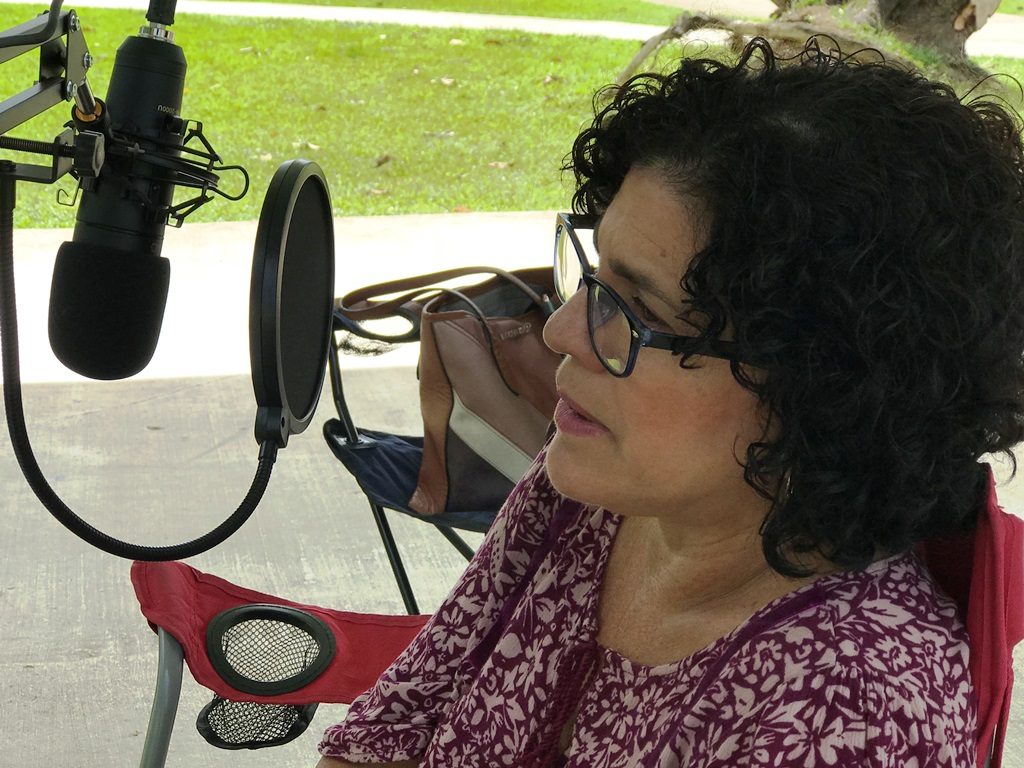
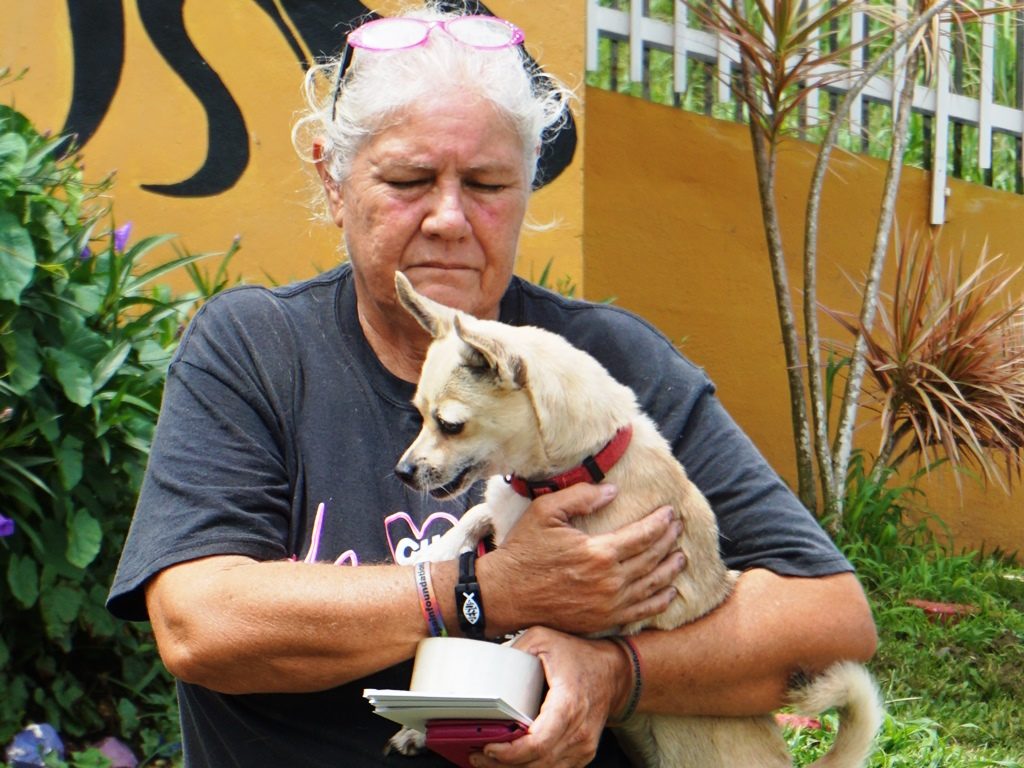
About Pancho
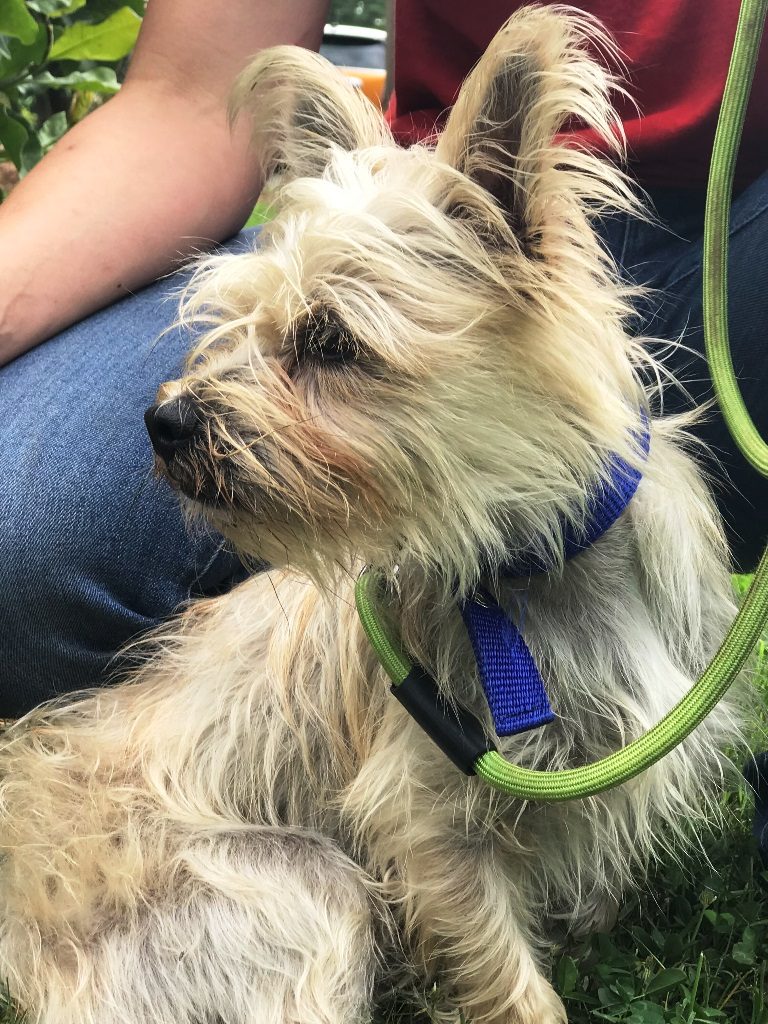
Pancho, a mixed breed stray, was found on the streets near a church in Guaynabo. Guaynabo is a city in the northern part of the island. Luckily, Pancho came into the care of Frances Barnes. Frances, a relentless rescuer, took Pancho in and began to care for him during the time that we were in Puerto Rico doing this story. During our time there, we had an opportunity to hang out with Pancho and found him to have quite a nice disposition for a dog with such a grim outlook only a few days earlier. While speaking with Frances, we found out that Pancho needed a home, so….we decided to help out and bring him to the US!
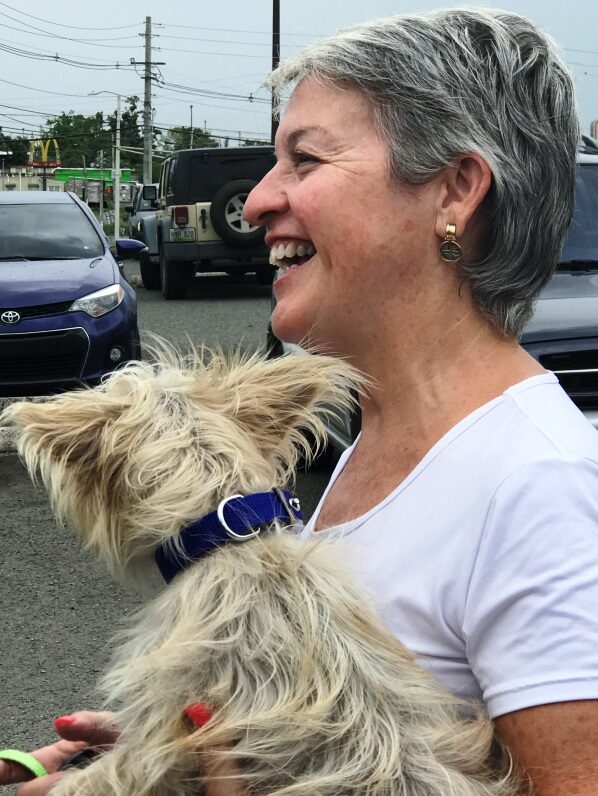
Support the Satos of Puerto Rico
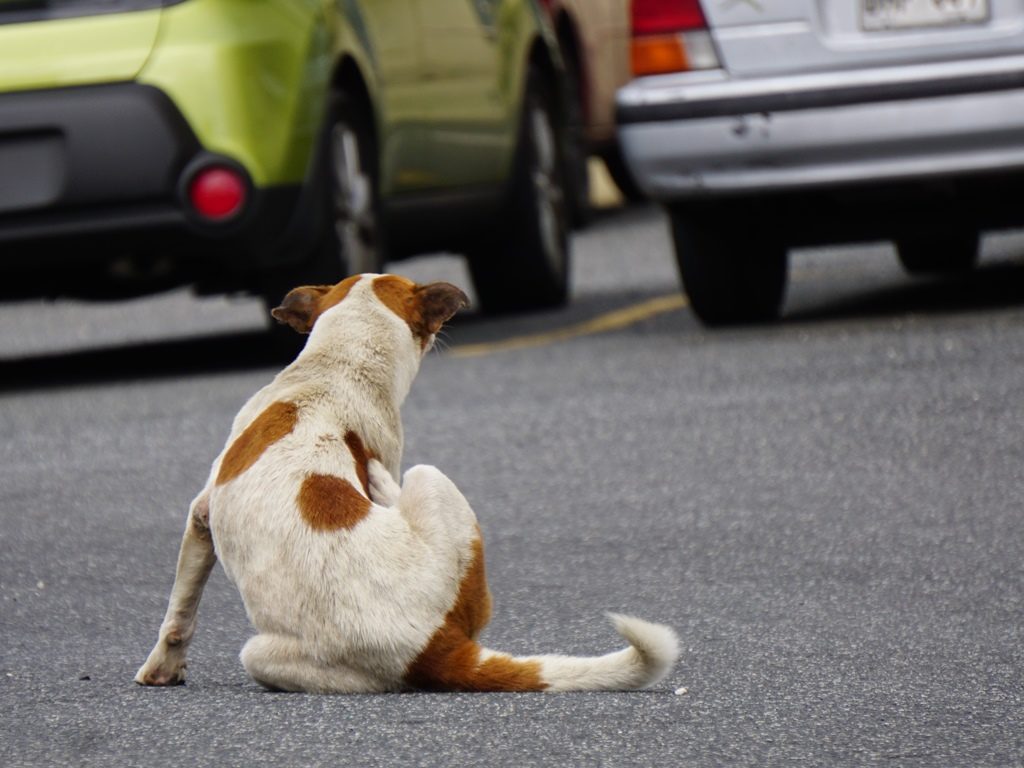
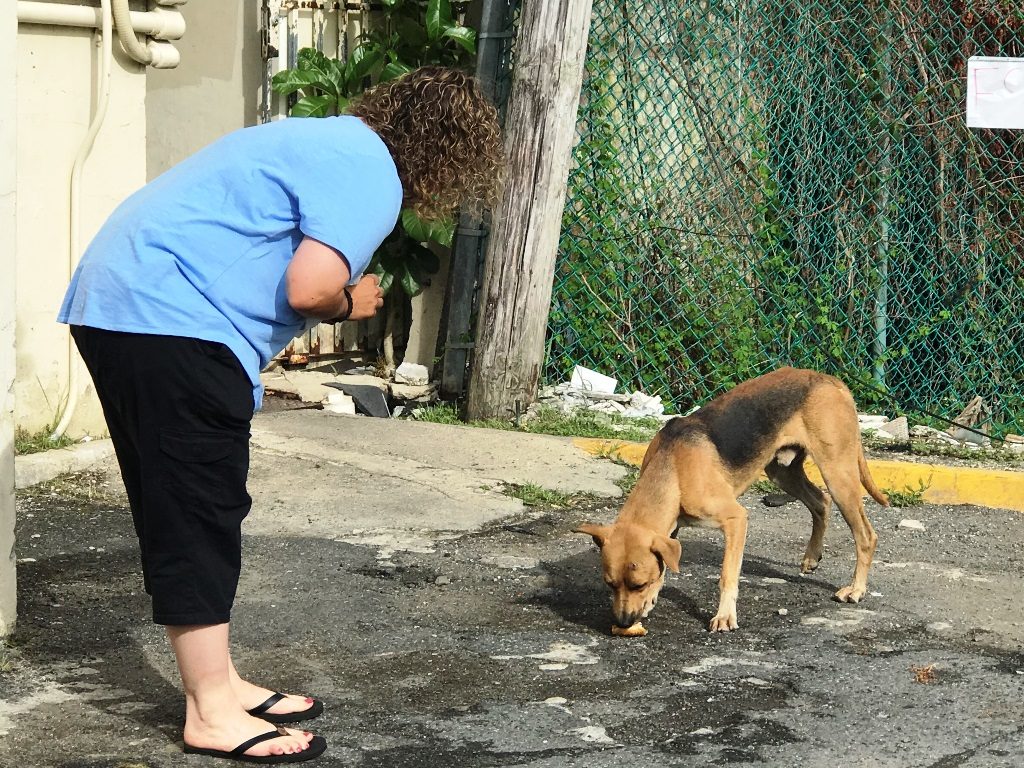

If you want to help support the satos of Puerto Rico and the groups that help them, be sure to follow the links to their pages below.
A Special Thanks to Frances Barnes, Vivian Nito, Jorge Mercado, Anaele Rubio, Enid Castillo and Evelyn Hernandez for sharing their stories.
We also want to thank our episode sponsors. Be sure to visit them to learn more and show them your support. Without their continued support our podcast wouldn’t be possible
Royal Canin
Website – Facebook – Instagram
Dogtra
Website – Facebook – Instagram
Highland Canine Training, LLC
Website – Facebook – Instagram
Podcast Transcript
Click ‘Show transcript’ below to read the transcript from this episode of A Life of Dogs.
A Life of Dogs Podcast
Episode 6: Dead Dog Beach
Hosts: Jason Purgason; Chris Anderson
Guests: Vivian Nito; Evelyn Hernandez; Enid Castillo
Duration: 40:50 minutes
Broadcast Date: June 18, 2019
Chris: Support for A Life of Dogs is brought to you by Royal Canin. Royal Canin offers precise, effective nutrition for dogs based on size, age, breed, and to address specific needs. To learn more about Royal Canin, visit them on the web at royalcanin.com, and by Dogtra, trusted by professionals. Dogtra ensures your training journey with durable training products equipped with patented, accurate and intuitive control to ensure the best experience. Join us and together we can make every dog exceptional. To learn more, call (888) 811-9111 or visit dogtra.com
Vivian: Females hiding in the country under trees and everything, giving birth to puppies, struggling to look for food and water and having all those 10 or 12 puppies, and most of them die and we find them dead. It’s a pity. But one of the most shocking recent stories is as recent as last Saturday, this lady put a post that she had a dog, a female, that she had given birth. She lives in a public housing project and they said she had to get rid of the dogs. They couldn’t be there and she says, well, it’s my female dog. I’m looking for something for the puppies, I’m finding help and I’m going to find help. Oh, that’s something very sad also. And as soon as I find help, I’ll get rid of them. I’ll send them. A lot of people have said that they’re going to help me. So I heard the information, I heard about the story on Friday and on Friday I started calling people and we agreed on Saturday to call her and say, yes, we’re going to go get the dogs on Saturday morning. When we got there, she said, I took them to the shelter in Puerto Rico public shelter in Carolina. And I said, I can’t believe you did that. You know what’s going to happen? And she says, oh, it’s, I just took them back there 15 minutes ago. You go get them there. I call this lady. I mean, she went there and she says, told her they already did it. 15 minutes! She was there 15 minutes after the lady took the female with six beautiful baby puppies, plus two more from the previous pregnancy. They were all gone.
Jason: Yabucoa is a small town located in the South-eastern part of the island of Puerto Rico. It was known to be a place on the island where unwanted dogs were discarded. As such, a fairly remote beach with beautiful white sand and towering palm trees became known as “Dead Dog Beach”. About 9 or 10 years ago, I had an opportunity while in Puerto Rico to go to Yabucoa. I had a chance to go with a friend there to Dead Dog Beach. We spent most of the day there, examining the dogs, feeding them, putting out water, making sure they were okay. For years, this beach was populated with unwanted dogs, many of them mothers with litters of puppies. Rescuers and other people visited the beach every day to check on the dogs, feed them, and give them water. In September of 2017, Hurricane Maria, a powerful category 4 storm struck Puerto Rico. As a result, Dead Dog Beach was changed forever.
From A Life of Dogs, I’m Jason Purgason and this is Dead Dog Beach. An important show note we want to mention here. While in Puerto Rico, we got a lot of help from rescuers and rescue groups sharing their stories and helping us make this episode possible. To show our gratitude to these groups, Highland Canine Training will donate $1 back to these groups for each download of this episode in the first month. Our host Chris Anderson starts us off with this story from the island of Puerto Rico.
Chris: Jason and I have been discussing a podcast about Dead Dog Beach for some time now and last month we finally made it happen. Shortly after departing the plane, we went to grab coffee and breakfast at the Starbucks in the city of Guaynabo. As we pulled into the parking lot, I noticed a Sato, also known as a homeless or feral dog, shading himself from the hot sun under a van. Of course as a dog lover, it brought tears to my eyes and I shared my breakfast with him. As I fed this grateful dog, three others approached and I shared my breakfast with them as well.
Hurricane Maria made landfall in Yabucoa, Puerto Rico and as a result it turned this entire enchanted island into Dead Dog Beach. All over the island, you will find abandoned dogs that are looking for food and water, many of them injured. Unfortunately, resources for dogs on the island are limited. Despite the destruction caused by Hurricane Maria, there are remarkable people working to create a better life for the Satos of Puerto Rico. There are remarkable stories of how life has changed after Maria from all over the island. We start with Jorge Mercado.
Jorge: I will say that this is worse and because as matter of fact I have here a campaign that I can show you “Don’t leave me alone. I would like to go with you.” That is a dog asking of their guardian to bring them to whatever place they go. Let me explain something why I’m saying there is a social and cultural and economical situation. In Puerto Rico until now, more than 300,000 Puerto Ricans have left the country. This is a reality that has been increasing and we expect of about half million Puerto Ricans will leave the island again. Okay. So if you calculate how many pets you have at your home, I have no idea, but I am sure that we are talking about more than 100,000 pets that will be affected in some way, and probably more. People in Puerto Rico, I am not talking about all, but have been increasing the problem that they are leaving their pets at their homes, patios, street and this complicates the situation. We have now a lot of varieties of races of animals in our streets. We are not talking now Satos only. This impression is incredible.
So we have a campaign right now in the press, in the alliance with El Nuevo Dia newspaper, Primera Hora newspaper, Ecole Veterinario, a veterinary medical doctors college in Puerto Rico all working with us, and we are educating people go to the state that you want to leave Puerto Rico because the reason, whatever reason may be but go with your pet. As matter of fact, we did an alliance with Puerto Rico Animal Unite that they are doing something great. They are renting airplanes and they put their animals and they go there and they put in your home, your dog or cat, and right now they are flying hundreds of pets, as we speak without any costs. Free! And sometimes they spay and neuter and vaccinate and everything at your own expense.
But the situation after Maria specifically the problem was increased, because they have a lot of abandoned animals now. We don’t have shelters enough. We don’t have foster enough. A lot of people are rescuing. I have seen with my people in the surroundings, like Frances rescuing everything animals. Since got the, we can kennelize that and we can spay and neuter and we are looking for fosters or adoptions. But this is very complicated. It is very expensive and the reality is we don’t have the infrastructure right now to accomplish all of the need that we have.
Chris: Vivian Nito is a full-time real estate agent and an independent rescuer who works with multiple organizations. Together they have saved many dogs. She travels Puerto Rico in her personal car loaded with food, water and medical supplies, so much so her car is often referred to as “the ambulance”.
Vivian: You should see my car and you would immediately know. For example, if someone calls me from Ponce – we are in San Juan – Ponce is at the South and they said, listen, I just saw six puppies in the middle of the highway. I say, can you pick them up for about two hours or three hours or take them somewhere safe so that the cars don’t do what happens. No, I don’t have time. I am on my way to my work. And I’m like, but please, do you know someone in the area? Oh, well, yeah, but I’m on my way to work. But you can late into work. Take 15 minutes and say you were doing some charity. No, no, no, no. I have to go, but they’re there. So what do I do? If they call me and they’re there and I’m like, please can you wait? I’m an hour away and I drive all the way to Ponce, pick up the puppies. She says, maybe okay, I’ll take them and I’ll meet you at the Burger King, whatever. So she takes them somewhere and I come, I pick up the dogs and put them in my car and I come back to San Juan. I take them to my vet and we prepare the puppies, and I start calling people for foster, and that’s what I call an ambulance. Everywhere they call me. I used to do it more, but now as I said, I’ve met people around the island. So for example, if there’s someone in Caguas, I’ll call Frances. Hey Frances, can you pick them up? Hold them for an hour or two, we’ll find someone, I promise I’m not going to let you stay with the dogs. I’m not going to leave you with the responsibility, but just help me for an hour or two while we get ready or do something. So she will always say yes.
Now we have a lady in Naranjito that she says yes, Vivian, I’m on my way to my work because they live in the island and they have to travel all those country roads and that’s why they find so many dogs in the country roads. And she says, I’ll take them with me and I’ll meet you in Caguas in my work. So she comes down with the dogs and I meet her in Caguas and I take them from Caguas. Many times I have appointments. Many times I have so many things, flights, but the word NO, I don’t understand it. I don’t say I can’t do it. I’ll find a way. I’ll try my best. If I really can’t do it, it’s something that I just can’t stop.
And sometimes I’m somewhere and everybody is looking at me like you’re nervous, something’s going on. What’s wrong with you? And I’m like, nothing. Nothing, because a lot of people don’t understand. So I just say nothing. I’m fine, I’m fine. But I’m in my mind thinking, let me see. Who can I call, what can I do? And with the phone, are you with the phone again? Yes, I am. You know, you can’t stop because it’s a matter of an hour or a few minutes before they get killed in the expressway or in the country road. Because again, humanity, you know, people don’t care. It’s like, it’s not my problem and it’s not true. It’s everybody’s problem. It’s the kid’s problem, the parents. It’s the society’s problem. It’s everybody’s problem, the state’s problem. So everybody has to do something. That’s what no one understands. They just continue their normal life and you talk to them. I don’t talk to many people unless it’s people that I really know that are into it, because the other people’s thinking that you’re crazy. What’s wrong with you? It’s only a dog. Can you believe it? It’s only a dog. You know, that hurts. I can’t even say it. I can’t say it’s only a dog. It’s a life, not a dog. It’s a life. It’s someone that didn’t choose that.
Chris: Historically, spaying and neutering has not been common practice in Puerto Rico. Also, many dogs were left to fend for themselves when their families evacuated following Hurricane Maria. Next up, Anaele Rubio explains what’s developed from these practices. Fortunately, things are starting to improve slowly but surely with the help of rescuers like Anaele.
Anaele: The program has existed always, but after Maria, because of people leaving the country, they just leave everything behind including animals, and it has been like a big exodus of people, professionals or anyone, but they have been leaving the country looking for a better future, but they always have the excuse that they cannot take their pet behind. Oh well I’m going to live in that place, or they just live like without any plan at all. They don’t think that you really need to plan for your pet and that’s what we need to change. It’s like leaving your kids behind. You need to plan. Do you have need to have a school or an area where you will leave your kid. You need to do that also with your pets, or if you cannot take them for the moment because you don’t know where you will live but most of them don’t have a plan, but you need to plan maybe to take them later with you, but leave them with someone who really will take care of them. They leave them to family and family, they just don’t care. They have the burden without ever wanting it and it is the animal that suffers. They need to see that. Well, I have my full time job, but most of my free time I realize that I’m spending in working with all of this and no regrets, because I’m sure there is a big need and it’s getting bigger after Maria and all that. We still need to change the way people think. We still need to change the way the government thinks and do things and create conscience. We still have a way to go, although we are beginning to see something and I’m glad I’m being part of that.
Chris: When we arrived here, Jason, Mike, my boss, he said, you know, you’re going to see more unaltered animals here that haven’t been spayed or neutered than you’ve ever seen in your life. And working in an organization myself where we’re working with dogs every day, but we’re training them to be pet dogs, police dogs, service dogs, everybody gets fixed pretty much, other than some of the police dogs. I’ve only seen a few dogs so far, male dogs and it’s obvious they haven’t been neutered and it’s just a different way of life down here in that aspect. It’s just how it’s always been?
Anaele: Yes, because people still have in mind that all the animals are like, okay. They survive there to run wild. They don’t see the importance of spaying and neutering them and taking care of them, and it’s getting to be a bigger problem with all those dogs and cats in the streets now more after people are fleeing the country after Maria looking for a better future, but they don’t think that their animals also need a better future. They need them and you don’t just leave them behind in your house that will be empty and probably someone will take care of them.
Chris: These rescuers often work in extreme conditions to save abandoned dogs. Listen as Vivian tells us about one of her experiences saving dogs that were left in Bayamon
Vivian: Do you want to hear a story, a real sad story after the hurricane? This guy lives in the very high part of a mountain in Bayamon. So on the country side of Bayamon, this man calls a friend. She has an organization also. Her name is Isabel Badwin, Angelitos de Dios or something like that. And he calls her and he says, listen, I saw your organization and I want to tell you a case here nearby my house. This guy lost everything. He’s in jail and the house is a mess. He lost it, everything, but he has three big boxers or four. He bought them. I’m feeding them, he tells me, because he left his father in charge and his father comes once in a while. So he says, can you help me? And she said, okay, send me a pin, let me see what I can do. Whatever. After about a month, the man called again and he says, I keep on feeding them, but you know what the guy did? The father of the one who’s in jail? He noticed that someone was feeding the dogs, so he put something very big like panels and everything in the fence so the dogs couldn’t reach to the fence to pick up the food and water that this man took. I’m very sad to say the story because it’s my people, it’s Puerto Rico, but it’s incredible. How can someone do that? So she calls me and she says, can we go up there? And I said, okay, you and me. That day I couldn’t go because I was showing some houses to this guy that came from the States and there’s no way I could go. So I said, can you please go? Find where it is and I promise I’ll go tomorrow. And she went and she says, I’m here, but I don’t know what to do. I don’t, I can’t pick them. I can’t open the gate, whatever. And I said, okay.
So I call this guy that I told you that has a minivan. He’s a trainer, Abdiel and I called a locksmith and I said, come on, let’s go up there. Immediately, the locksmith open every…we were in a hurry. I don’t care. I’m saying it, I don’t care. We just went in there, took the dogs. Put them in…one in my car and the other two, this guy took them in his minivan. We all came down, we brought them to our vet. We did all the process of fixing them. He took them into foster. There were three, because one had died in the yard. The female had died. We had the three males and we started doing everything and thanks to All-Sato Rescue, I submitted information to them.
I said, look, this is the case. Can you guys help me? Whatever. And immediately they took them, an organization of boxers in Massachusetts, a shelter took the three of them and they were so happy with them. You should see. They had the biggest bed and they were starting training and they said they were great dogs and they were up there in a mountain where nobody could reach them, at the end of a mountain on the top of a hill where nobody wanted them, where they were there for, I don’t know, this was about in maybe January or February a few months ago and they were there. They were there for the storm and everything, all alone.
Chris: Introducing the Dogtra ball trainer, a unique dual-function trainer that launches and drops balls. The trainer launches the ball up to five feet and holds up to three balls. It’s expandable up to eight devices and uses only one controller with a hundred yard range. The Dogtra ball trainer’s compact size makes it adaptable for a variety of creative training types. It provides immediate rewards for training, ranging from canine scent detection, bark-and-hold training, agility, and even service dog work. Astute trainers with proper training tools are the key to unleashing your dog’s full potential. For over 30 years, Dogtra has collaborated with industry professionals to create class leading tools. Trusted by professional dog trainers, canine officers and hunters, Dogtra enhances your training journey with durable training products equipped and patented with accurate and intuitive control to ensure the best experience. Learn more at dogtra.com. Join us and together we can make every dog exceptional.
Royal Canin delivers precise nutritional solutions so your dog can perform at their very best level. To achieve a perfect balance of nutrients for each dog, they rely on an extensive network of canine experts from across the globe, including veterinarians, universities, dog professionals, and their own research development center in France. Royal Canin helps your dogs train and perform at their full potential. To learn more about Royal Canin and the nutritional solutions they have to offer your dogs, visit them online at royalcanin.com
Jason: During our trip around Puerto Rico, interviewing people to bring you this story, we ended up at a dog sanctuary in Caguas.
Chris: The sanctuary was called Sanctuario Lazaro. It was at the top of a beautiful mountain in Caguas. When you drove into this place, you had to go through a fenced gate and immediately there were dogs everywhere and people just all over the place working hard
Jason: This place was busy as a beehive. During the hour and a half, maybe two hours we were there, there was probably somewhere between 30 and 40 cars of people coming in, leaving. They were dropping off food. Some people were getting out and helping to clean the kennels and pick up the yard and repair fence. There was even a group of boy Scouts there that was working.
Chris: The facility’s really small. There are few fenced in areas and from what I understand what they said, it’s packed with dogs and it’s packed with cats, so much so that they had plenty of dogs roaming around free. Initially I was presented with Enid Castillo and she shared with us some of her experiences. The sanctuary solely runs off of volunteers and donations of food and money from very kind people
Jason: During the time that I was setting up the equipment and while Chris was interviewing Enid, I noticed an older lady, who was just bustling around the place the whole time, white hair. She was picking up trash. She was petting dogs. She was feeding, she was cleaning. She was working as hard as or harder than any of the younger folks that were running around that place. And while talking to Enid, we found out that this lady, Evelyn Hernandez, was actually the founder of the sanctuary. And we heard this story that was somewhat second hand. And after hearing that story, we desperately wanted to talk to Evelyn about her experience during Maria, so we eventually talked her into being interviewed by us. Her English wasn’t very good and initially she refused. But with the help of a translator, here’s her story.
Translator: Her name is Evelyn Hernandez. She is the founder of Santaurio Lazaro here in Caguas, Puerto Rico, and volunteers came, prepared, put wood on the windows and everything that we thought maybe would be affected, but the hurricane in Caguas, we got hit very badly and everything we did was not enough. But even though we have damage in the structures and we had a lot of water coming in, none of the dogs were affected. None of the cats were affected. She stays always when it’s like December 31st, because they’re scared of the fireworks. She stays here. If there’s a lot of dogs that have been operated on, or they have some situations, she stays here to sleep with them and hurricanes and this season that’s coming in, she prepares and she stays here.
Volunteers come during the day, but at night she’s the one that stays here with them, but none of them were affected and aftermath, it was a problem. She’s had to stay here three days before we could come and help her out and find out how they were doing, because we were all not in communicated for several weeks. It took us like six months to function like we were, but we’re not 100% because we have where the dogs are, they are broken. Right now you see the materials that are behind you. That’s the Boy Scouts. They are coming tomorrow. They’re going to help us out. You can see the structures that they are still broken. Everything, the trees and everything was something that we have to do for ourselves before the city could come and help. So it was six months and we still not 100% working like it because we usually go to the malls and we go to other places to go and do fundraising and that’s not possible because they are not giving permission for that. So we’re having a bit of trouble with that. [Spanish; 27:43 to 28:00]
Chris: Evelyn was trapped inside the facility for three days during Hurricane Maria because the entrance was blocked by a fallen tree. She told us I didn’t get scared because the most important thing is that the animals were okay. Needless to say, Evelyn Hernandez is an amazing woman with a heart of gold.
Translator: She talks to them, they react very cute with her because when they start all barking, she tells them, Oh, it’s going to be okay and they all listen and we know that they know what she’s saying. So she is the master of all of them. That’s how she calls them, they are my kids, and every time some dogs get adopted, she gets very worried. She would like to have a feedback on where they are because we are a no-kill shelter. So when we give them, we want them to go to a nice house and if they have to go to a shelter, it has to be a no-kill because otherwise they’d rather stay here because she knows they’re going to be safe and they are loved.
Chris: So this is your life?
Evelyn: Yeah. Yeah. All in my life.
Enid: I am Enid Castillo. I’m from Puerto Rico and I have founded my organization, which is Love for Paws Corporation here in Puerto Rico because we really wanted to help a little bit more because there are so many abandoned animals, stray animals in the island. Well, you know what I’ve observed is now we’ve got more puppies. I don’t know what happened after Maria, but we got so many puppies. Before we had so many strays. And then there’s so many foundations like my foundation here. I think there are over a hundred, and they are all over the island and they’re doing what they can to. They are all stressed out and with so many dogs and cats, but I think maybe because we’ve got so many foundations and rescue groups around, we’ve been able to move more dogs and get them off the street, and Facebook has been a great tool for that because even when a dog escapes from a home, they can find their way back because before like five or 10 years ago, forget it, that dog was lost. And the problem we have in Puerto Rico is cultural. People here, they don’t believe in spaying and neutering. It’s doesn’t matter if they’re educated or not educated, whether, they have the money or they don’t have the money. They are just like, why do I have to do that? He lives in my home inside. He will never go. And it does happen because those strays, they just don’t appear from nothing. I think even before Maria it was bad, after Maria has been bad, but we’re trying to handle it. We’re trying, all of us. There’s so many people trying. There’s so many groups, but we’re dealing with it and there’s a way to go. We’re doing it. We’re trying to do it.
Chris: Even though the destruction and aftermath of Hurricane Maria is no longer at the forefront of the news, the people in dogs of Puerto Rico continue to need support. These rescue organizations are working tirelessly day in and day out with very limited resources available. We asked how people outside of Puerto Rico can help.
Vivian: Well, of course, keep on encouraging them to adopt because that’s what we depend on. But if they come to the state, if they come to Puerto Rico and they want to help, maybe they can help. And for example, take two little kennels of puppies, maybe four puppies. The other day a lady came from the States, from New York and she’s called me and she says, I saw your post of the puppies in the foster club page. You have 10 puppies. I would like to do some community work with children while we’re on vacation. And I said, of course today I have to go bathe them and take all the ticks and everything out and prepare them. So she came with all the kids, three kids, and they helped us a lot. And she adopted one and she took the puppy and I was saying, take four and you can find some friends. Each of you can take two, you know, and she says, I’m sorry but I live in a building and I would love to, but she sent me information of friends that want to adopt, so that’s very nice. But it’s also a process. We have to receive the information, interview them, see where they live. You have to do a screening. I know her, so if she recommended her, it must be someone very wonderful, and well when you come to Puerto Rico, maybe you can help us with that kind of thing, or say for example, if you have some petty cash go to a vet and say, okay, I want to sponsor one or two spayings. If a rescuer comes here, I want you to not charge her for this spaying or these vaccines. Maybe that will help us a lot because it’s a lot of our money. We received people that help us a hundred here, a hundred there, but the main bulk is a lot. It’s a lot of money, so anybody that can sponsor spaying and neutering or a few vaccines or something like that, it’s very helpful.
Or if they know people, if they meet people in Puerto Rico and they know that they’re interested, well connect us to those people. Hey, I met this lady that has a nice patio and she said she could foster so big dogs or whatever though, that would be great. More people fostering, and I’m spreading the word out that Puerto Rico is a beautiful island. There’s a lot of beautiful people here and if they have the opportunity to help in sponsoring and helping us, the locals with dogs in their areas, that would be very good. Also spreading the word. There’s so much work to do. We just need people to get involved and help us and if they want to bring puppies or dogs to the US, they can either go to the shelters or bring them with them. We’ll prepare the health certificates and everything and they will be vaccinated and everything will be fine.
Jorge: Well as I told you, the rescuers are doing a great job, but they are limited about resources. I can tell you that almost all of the rescuers have some kind of limitation economically. They are not wealthy people. Okay. I have seen initiatives like Puerto Rico Animal Unite for instance that are doing a great job. I have seen Humane Society that is doing a good job in Puerto Rico in some way trying to help in the problematic situation that we are in. Sometimes SPCA also have been here trying to educate and train veterinarians. I have seen non-profit organization like we that are trying to do the best. So no matter we are in the crisis, I am seeing a light at the end of the tunnel, and I see the light also because the government is more aware now than ever to try to do the best to try to resolve that. I have seen more alliances between groups, and the best wishes of [unclear; 36:44]. So I am not saying I am negative. I will say that there is a lot of organizations. I can mention a few that is taking care of something that is important for us, but the situation needs more than that.
Vivian: Well I think, it’s very difficult for them. The people that know me, my friends in Buffalo, because I already have my friends in Buffalo, after Maria, they just called, they emailed. They were just like, what do you need? I said, well we need food, we need flea and tick prevention things, whatever you can send. PayPal, donate by PayPal and that’s the easiest way they can do it, and if they can adopt our Satos and they love it. North American people, they’re very good I think. They love our Satos and I think they’re more appreciative. I think they think they’re so different because they are. They are all different. Here again, they love to adopt pure breds. I don’t know why because I tell them they’re the same. They have four legs, a tail but still, no, I don’t have a Chihuahua. You know, I think satos when you rescue them, they are so appreciative. I think they know. I think the dogs in Puerto Rico are very smart, very grateful. We can do so many things with them. We just need to plan, look for resources and help them out. You should see the letters that they write to us from the US when we send those dogs. The people are so grateful and they said, I can’t believe this is a dog you found walking through the street alone. How did they leave them? It could be a schnauzer, a Shi-tzu, to a Golden, Boxers, and Rottweiler anything. Don’t buy them. They’re real dogs.
Jason: Puerto Rico is known as Isla Del Encanto, the enchanted island. Since Hurricane Maria struck, the dogs and people of Puerto Rico had been faced with overwhelming challenges and they continue to need your help. If you’d like to adopt or foster a Sato or donate to an organization helping dogs in Puerto Rico, visit our episode page for links to do so. And visit our page for updates on Pancho, the Sato we brought back on our return trip from Puerto Rico. We want to extend a special thanks to Frances Barnes and Aldolase Garcia Colon for helping us make this episode possible. Be sure to leave us a review on iTunes or on our website and don’t forget to follow us on Facebook and Instagram.
Chris: Support for A Life of Dogs comes from the school for dog trainers at Highland Canine Training, the industry leader in canine education programs. For those looking to begin a career as a professional dog trainer or polish off their existing skills, we have a variety of canine education programs. Our courses are taught by experts in the field who know how to ensure you gain the knowledge to make you successful in the industry. We accept the GI Bill and financing is available. For more information, visit internationaldogtrainerschool.com.

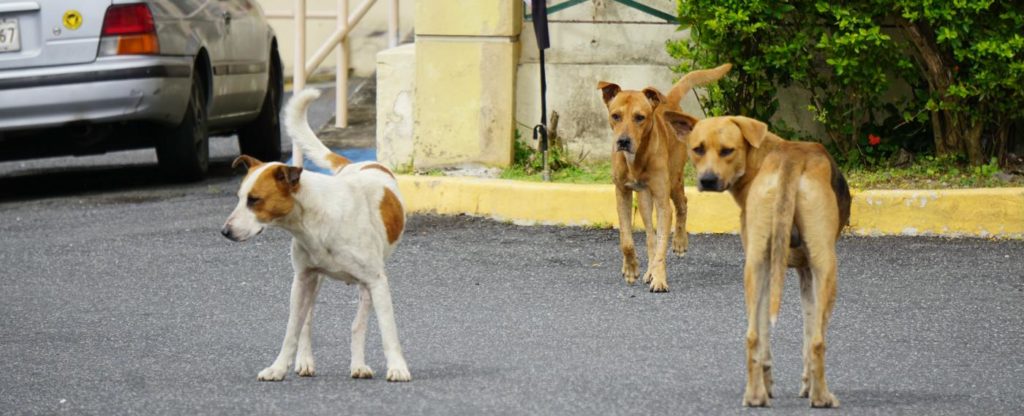
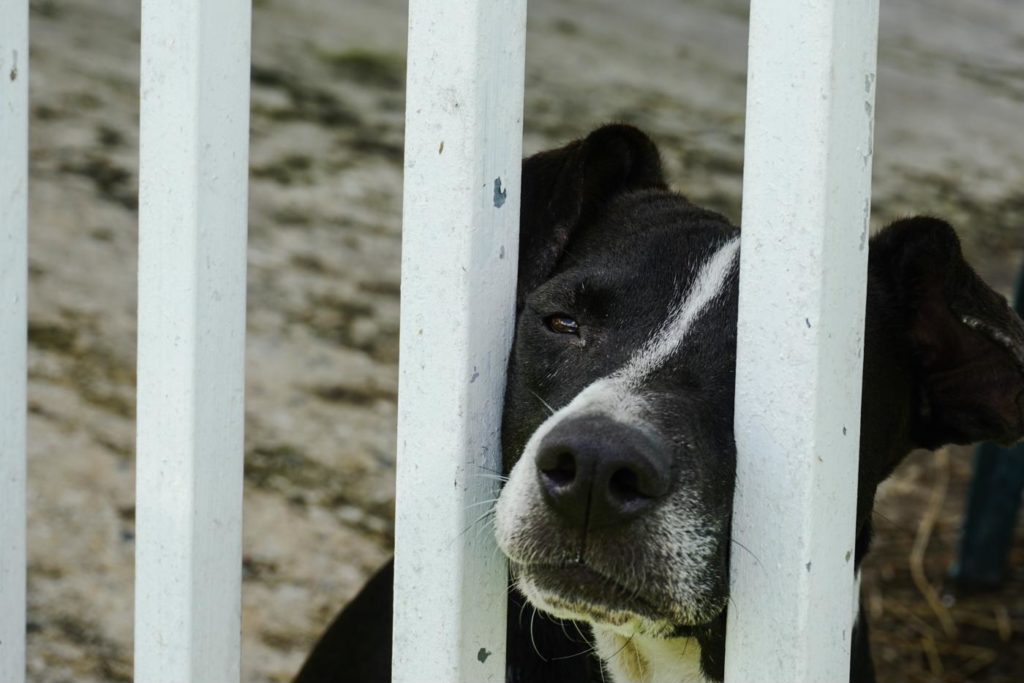

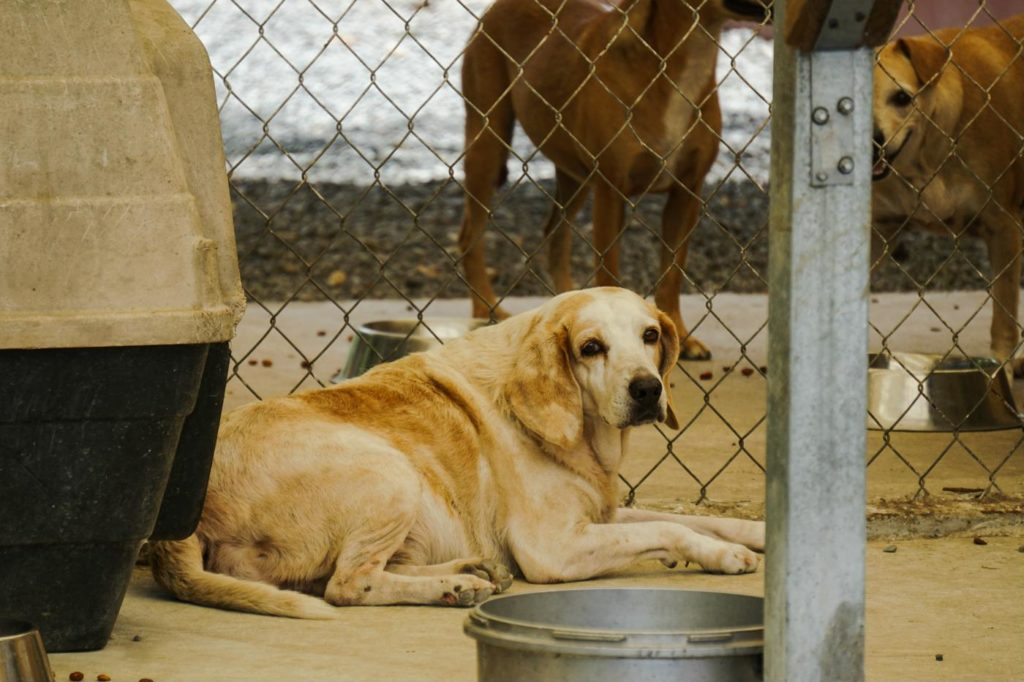




Interesting podcast. It’s sad to hear about dogs being abandoned when people move away or are forced to leave. Having the no kill sanctuary in the mountains for dogs is fantastic! hopefully they can spay and neuter enough that the population starts to come under control.
Informative podcast covering the plight of stray and abandoned dogs in Puerto Rico, and how Hurricane Maria exacerbated the crisis. The locals who dedicate time, money, and effort to help these dog is very encouraging. However, the cultural norm of not altering dogs is disheartening, and it is hard to imagine the situation getting better without a change of heart regarding spay/neuter procedures. Unfortunately, this is a problem which plagues many parts of the world.
It’s a really well put together podcast that kept me interested all the way through. I think its awesome how the local people work to keep the strays alive the best they can after Maria.
Thought the episode was very informative and taught me that there are a lot of people out there in the world that abandon their animals. But also that people from all over come to Puerto Rico and try to help as well as natives that have been doing it for many years.
Learning about the events that happens in Yabucoa, and the length that the people of Puerto Rico are willing to go through to give stray dogs a chance of life is phenomenal. I would like to thank the woman personally who went out of her way to save the boxers on the mountainside. She saved those dog’s life.
I was pleased to hear about the work Jason and his crew are doing to create awareness about responsible dog ownership on my Island. Thank you for putting this together and helping out with the satos in Puerto Rico!
This podcast was not only informative but very eye opening. It takes you to puerto rico and into the lives of the stray dogs on the island. When Hurricane Maria hit, it spread the stray dogs from the beach to all over the island. Mainly mother dogs, with their pups. Theyre all quenched, starving and in need of humans help. Loving residents go out of their way to make sure the dogs get needed items daily. As heartbreaking as it is to know many dogs are struggling as such, it is also heartwarming to know how many individuals make time to help. They can’t do it alone though and need the word spread of how bad the issue is of abandoning pet dogs. Not only does Puerto Rico need help, they need their people to be educated on proper care for dogs and how their lives work. Must listen to, but proceed with caution. You do end it with a heavy heart and a want to help the change.
I found this podcast to be very interesting and educational. I was not aware of all of the issues regarding spaying and neutering dogs in other countries such as Puerto Rico since it is so normalized in the US. With people abandoning dogs and litters of puppies I found it to be quite sad. It was interesting to see how there were people there who would go around any chance they could to try and help these abandoned dogs on the island. After the hurricane hit and the issue became more island wide than just one consolidated area it seemed that more people did attempt to step up to help. Overall I thought that it was interesting how many issues there are regarding dog populations and people unable to care for dogs in countries outside of the US.
I had mixed emotions listening to this podcast. The information was excellent, and I appreciated the interviews with various people about the culture, what the current conditions are like, and how they are trying to make a change. It made me sad listening to the stories. The story regarding the mother and her pups along with the 2 older ones from a previous liter was awful. How sad after just 15 minutes she along with all her pups were euthanized. That was hard to hear. These stories absolutely need to be told but they are so sad. I enjoyed the ending of the story involving the Boxers that were rescued and ultimately adopted by families in Massachusetts. All in all excellent podcast, just sad information.
This podcast was really interesting. I found it very sad listening to how the dogs are basically regarded as “it’s just a dog”. I didn’t know they had a an issue with spaying/neutering dogs culturally regardless of the education provided surrounding this topic. I appreciate the efforts made by various people and it made me smile at the “ambulance” reference regarding one the individual vehicle.
This podcast was very informative on the topic at hand, dead dog beach. The podcast gave eye opening evidence/information of the sad and shocking situation with the satos in Puerto Rico after the hurricane hit and how it impacted the dog population on the island. I am very happy to hear about all the people that try and help the situation and hearing about things like what the highland canine group did/ is doing for the satos in Puerto Rico and organizations dedicated to them is inspiring and warms my heart
Awesome podcast on dead dog beach very informative . I personally loved the story on the. Boxers how they were able to take them in from the father that wasn’t caring for the dog and found these animals a great home .
The podcast was very interesting to listen to. I have officially listened to all of your podcasts thus far and this one in particular had me zoned in for sure. It was very informative and kind of sad to listen to. It’s good to hear there are people and organizations are committed to helping!